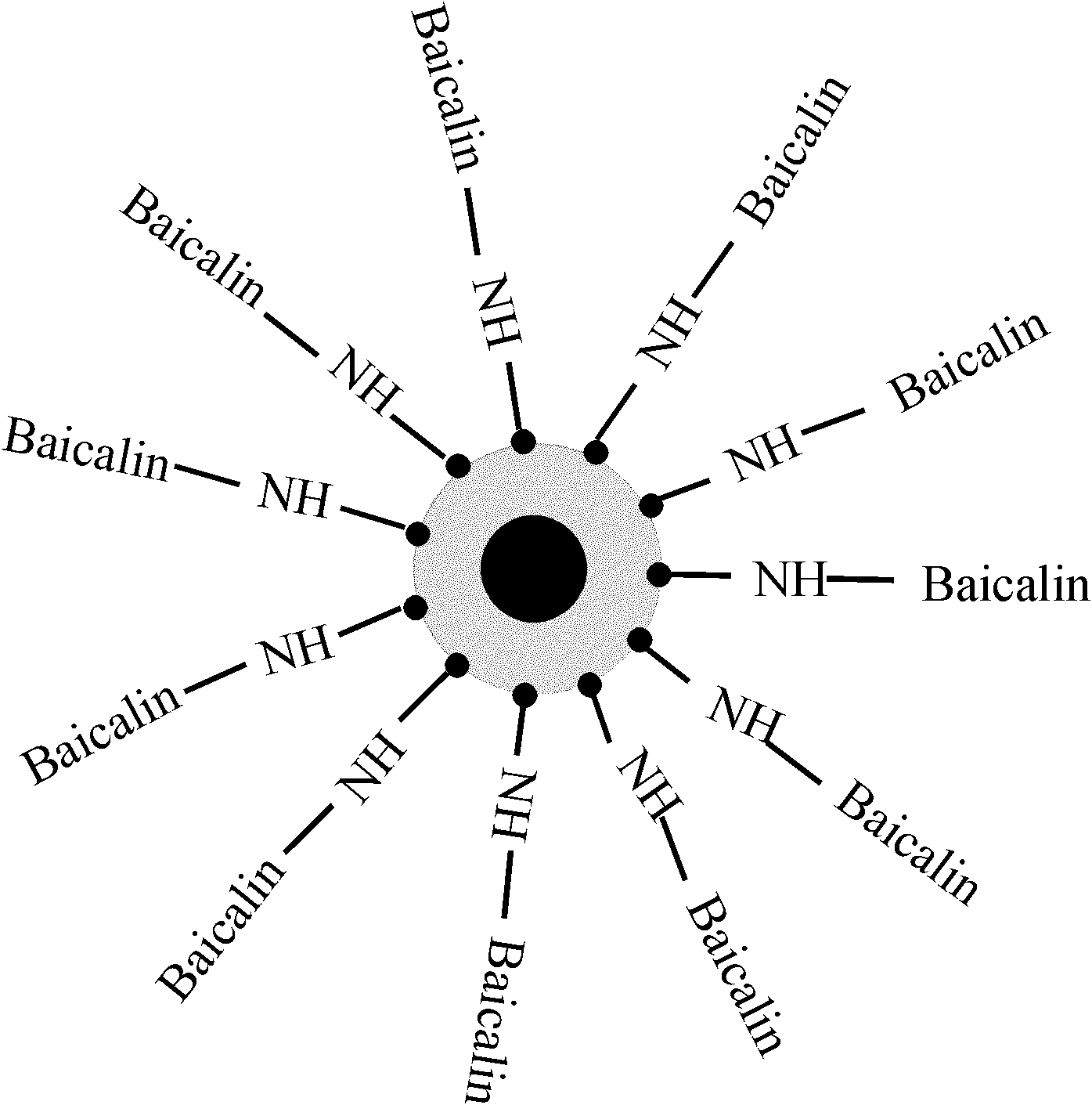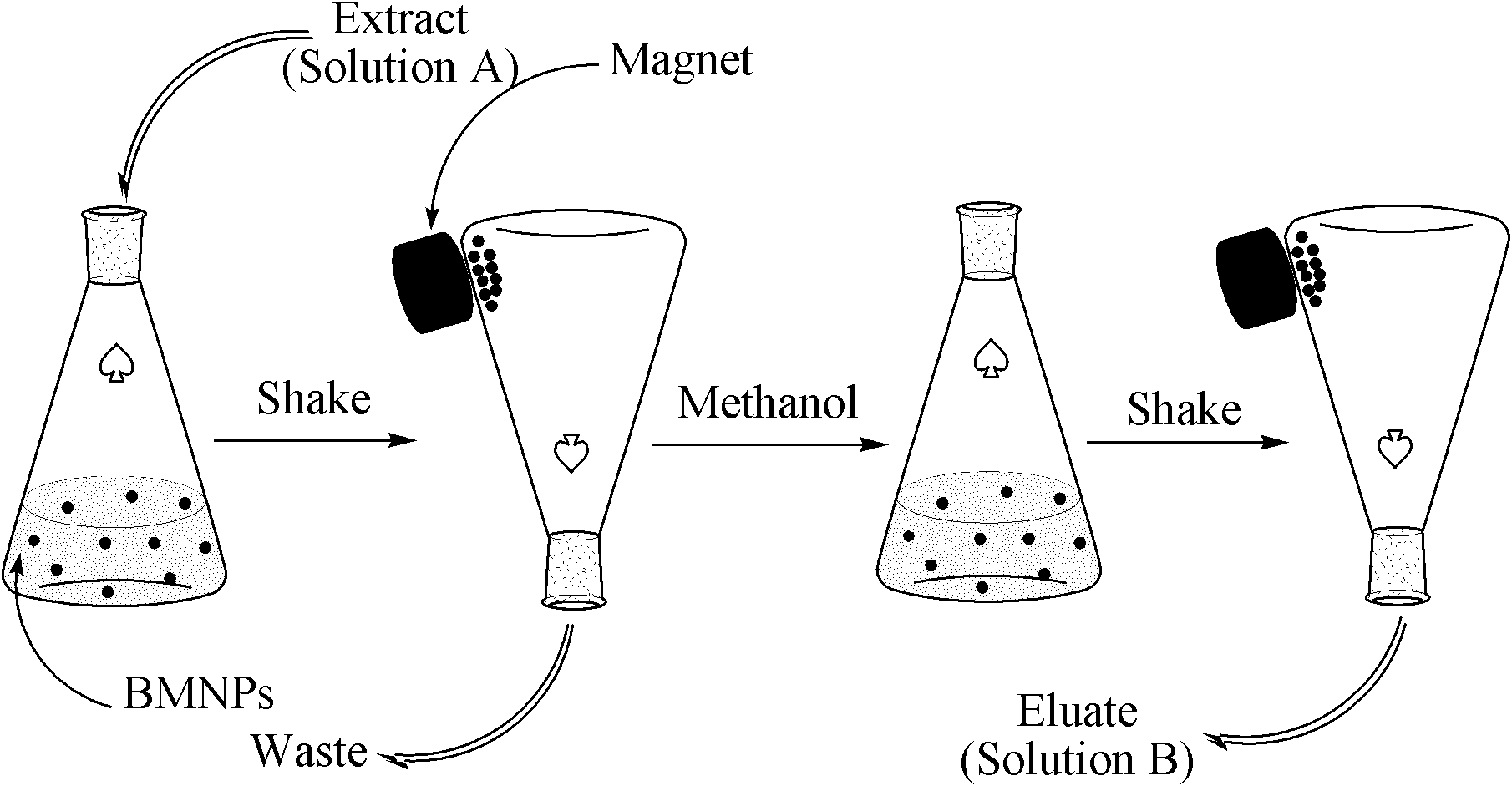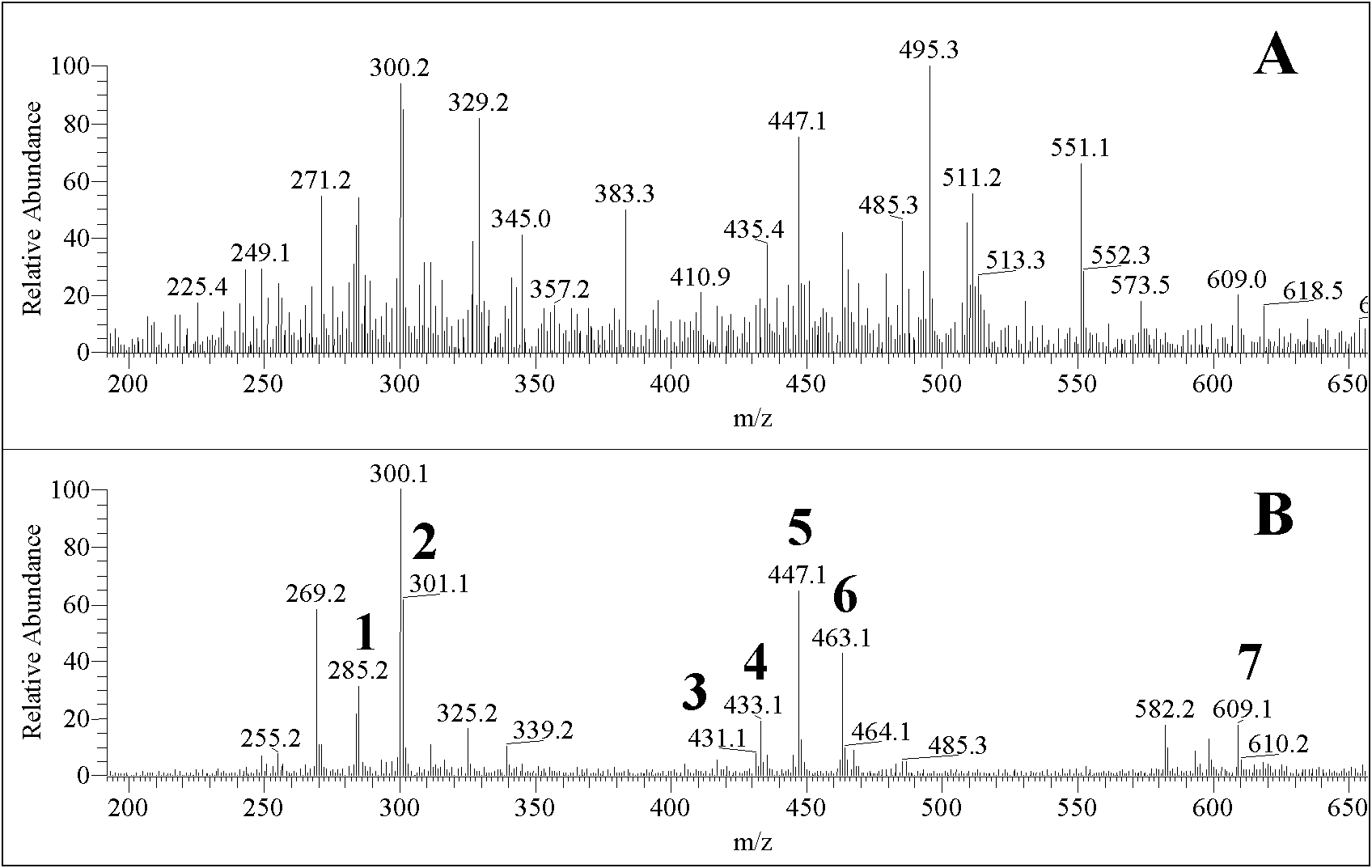Surface-bonded baicalin magnetic nano-particle, and preparation method and application thereof
A technology of magnetic nanoparticles and baicalin, which is applied in the field of phytochemistry, can solve the problems of inability to solve the problems of enrichment and separation of total flavonoids, and achieves the effect of avoiding toxic solvent residues
- Summary
- Abstract
- Description
- Claims
- Application Information
AI Technical Summary
Problems solved by technology
Method used
Image
Examples
Embodiment 1
[0030] Example 1 Preparation of surface-bonded baicalin magnetic nanoparticles
[0031] Preparation of N-terminal Magnetic Nanoparticles: Fe 2+ and Fe 3+ Dissolve in deoxygenated high-purity water at a ratio of 1:2, add ammonia water dropwise to pH 10 under high-speed stirring, and react for 1.5 hours; after separation by magnet adsorption, add 1 times the amount of tetraethyl orthosilicate, and add dropwise under high-speed stirring Ammonia to pH 10, react for 2 hours; use magnet to separate and wash with pure water until neutral, then use ethanol as solvent, add 2 times the amount of 3-aminopropyltrimethoxysiloxane, stir at high speed for 10 hours, and use magnet to separate That is, amino-terminal magnetic nanoparticles are obtained.
[0032] Take 0.5g of amino-terminal magnetic nanoparticles and 0.1g of baicalin in a 250mL round-bottomed flask, disperse with 50mL of anhydrous dichloromethane, add 0.1g of dicyclohexylcarbodiimide, and use nitrogen to protect against water...
Embodiment 2
[0033] Example 2 Preparation of surface-bound baicalin magnetic nanoparticles
[0034] Take 0.1g of baicalin in a 250mL round-bottomed flask, add 15mL of thionyl chloride, reflux for 2 hours, steam off excess thionyl chloride under pressure, then add 50mL of anhydrous toluene to dissolve to obtain baicalin chloride, and pour it into the bottle under stirring. 0.5 g of amino-terminal magnetic nanoparticles were added to the mixture, nitrogen was protected against water vapor, and the mixture was refluxed for 12 hours. The obtained magnetic nanoparticles were adsorbed and separated by a magnet, redispersed and washed with methanol for three times, and dried under reduced pressure in a vacuum to obtain surface-bound baicalin magnetic nanoparticles.
Embodiment 3
[0035] Example 3 Application of surface-bonded baicalin magnetic nanoparticles
[0036] Weigh 0.2g of Chinese rose powder, add 500mL of water and ultrasonically extract for 45 minutes to obtain the water extract of Chinese rose (solution A); add 15 mg of surface-bound baicalin magnetic nanoparticles to solution A, shake vigorously for 5 minutes and then magnetically separate Pour off the supernatant, then add 1mL of methanol and shake vigorously for 1min, and magnetically separate the methanol solution (solution B) to enrich the flavonoids in rose flowers. The process is as follows: figure 2 shown.
[0037] Use electrospray mass spectrometry to detect solutions A and B respectively, as attached image 3 As shown, the results show that no flavonoid quasi-molecular ion peaks appear in solution A, and 7 flavonoids contained in rose flower can be detected in solution B enriched by surface-bound baicalin magnetic nanoparticles, The analysis of its cleavage fragments by electrosp...
PUM
| Property | Measurement | Unit |
|---|---|---|
| Granularity | aaaaa | aaaaa |
Abstract
Description
Claims
Application Information
 Login to View More
Login to View More - R&D
- Intellectual Property
- Life Sciences
- Materials
- Tech Scout
- Unparalleled Data Quality
- Higher Quality Content
- 60% Fewer Hallucinations
Browse by: Latest US Patents, China's latest patents, Technical Efficacy Thesaurus, Application Domain, Technology Topic, Popular Technical Reports.
© 2025 PatSnap. All rights reserved.Legal|Privacy policy|Modern Slavery Act Transparency Statement|Sitemap|About US| Contact US: help@patsnap.com



